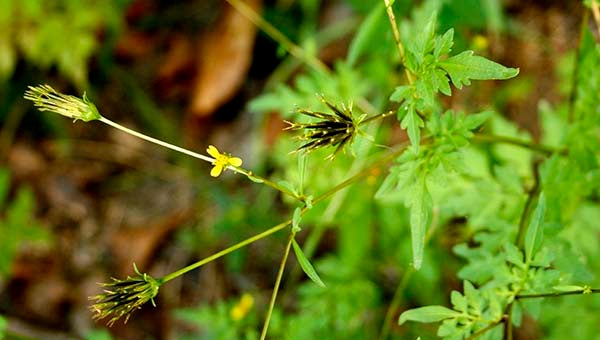Spanish Needles could follow you home
Published 11:14 am Friday, August 21, 2015

Spanish Needles have small yellow flowers at the ends of slender stems, growing 1-4 feet high, depending on growing conditions. — SUBMITTED | HELEN HAMILTON
Editor’s note: In an effort to expand coverage of her column, Helen Hamilton of the Virginia Native Plant Society has offered her articles for regular publication in The Tidewater News.
by Helen Hamilton
Spanish Needles (Bidens bipinnata)
This native late-summer plant is called Spanish Needles because the needle-like dry fruits will stick to anything passing by. In summer the plant has small yellow flowers, at the ends of slender stems, growing 1-4 feet high, depending on growing conditions. Bright green leaves are fern-like, divided many times and sit opposite each other on the stem.
By early fall the flower head is replaced by a round seed head, with the dry fruits radiating out in every direction. Each seed ends with a backward-pointing barb that clings to the fur, pants, shoestrings and skin. An annual, it blooms for only one season, but the plant will reappear the next year as the seeds are distributed by the wind, animals and people.
The rays and disc flowers identify this plant as a member of the Aster Family. All asters attract many types of bees, wasps and flies, feeding on nectar in the disc flowers and transferring pollen. Honeybees, leaf-cutting bees and the cabbage white butterfly are frequent visitors to Spanish Needles. Blooming from August through October, the nectar and pollen feeds insects that are active late in the season.
While it likes a fertile, loamy soil, somewhat moist, this plant can adapt to a wide range of environmental conditions, as long as there is dappled sunlight — it wilts in full sun. Other members of the genus Bidens prefer wetter habitats, and the leaves and flowers are different, the fruits broad, not needle-like. These plants are common throughout Virginia, but not usually available in garden centers. Seeds can be ordered from nurseries in the prairie states.
Native Americans found uses for this plant. The Cherokee chewed the leaves for sore throat and used a leaf tea to expel worms.
The genus name Bidens means “two teeth,” referring to the barbed points on the fruits that will stick into anything passing by, fur of animals and clothing of people. “Sticktights” is another common name.
HELEN HAMILTON is past president of the John Clayton Chapter, VNPS. Contact her at helen48@cox.net. For more information about native plants visit www.vnps.org.





